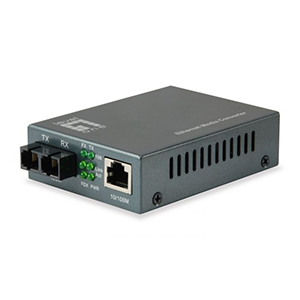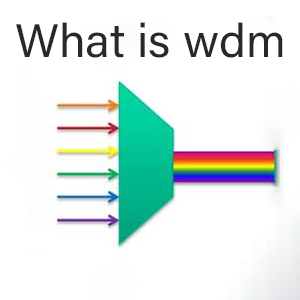With the rapid development of information technology, optical transmission networks have become the key infrastructure supporting modern communications. POTN (Packet Optical Transport Network), as a representative of the next generation optical transmission network technology, is gradually receiving widespread attention in the industry. This article will provide an in-depth analysis of the concepts, characteristics, application scenarios and future development trends of POTN to provide readers with a comprehensive understanding.
What is POTN
Driven by the wave of digitalization, optical transmission networks are undergoing unprecedented changes. As the leader of this change, the birth of POTN (Packet Optical Transport Network) marks a new milestone in optical transmission technology. POTN is an optical transmission network architecture based on packet technology. It combines the stability of traditional optical transmission networks and the flexibility of packet networks to provide more efficient and reliable transmission solutions for modern communication services.
With the rapid development of technologies such as cloud computing, big data, and the Internet of Things, the requirements for optical transmission networks are becoming higher and higher. Although the traditional optical transmission network is stable and reliable, it is unable to handle packet services and cannot meet the strict requirements of modern communication services in terms of bandwidth, delay, jitter, etc. The emergence of POTN has just made up for this shortcoming. It combines the advantages of packet technology and optical transmission technology to provide a more comprehensive and efficient solution for modern communication services.
Comparison between POTN and traditional optical transmission network
Compared with traditional optical transmission networks, POTN has significant advantages in technical features and application scenarios.
First of all, in terms of technical features, POTN adopts packet switching technology, which can achieve more efficient bandwidth utilization and more flexible service scheduling. It supports the simultaneous transmission of multiple business types, including voice, video, data, etc., and can meet the transmission quality requirements of different businesses. In addition, POTN also has powerful network management functions, which can realize dynamic allocation of network resources and rapid fault location, improving the reliability and maintainability of the network.
Secondly, in terms of application scenarios, POTN has a wider range of applications. It can not only be used for traditional telecommunications business transmission, but also can be applied to emerging fields such as data center interconnection, cloud computing, and the Internet of Things. In terms of data center interconnection, POTN can provide high-speed, low-latency data transmission channels to meet the needs for rapid exchange of large amounts of data between data centers. In the field of cloud computing, POTN can build a flexible and scalable cloud computing network to provide strong support for the rapid development of cloud computing services. In the field of Internet of Things, POTN can support the access of massive devices and the collection of data, achieving the goal of interconnecting everything.
To sum up, POTN, as the leader of the new generation of optical transmission networks, has significant technical advantages and application prospects. With the continuous advancement of technology and the gradual maturity of the market, POTN will play an increasingly important role in the future communications field, pushing optical transmission network technology to new heights.
What are the technical features of POTN
Efficient packet processing capabilities
POTN has excellent packet processing capabilities and can effectively cope with the growing data transmission needs in modern communication services. By introducing packet switching technology, POTN realizes efficient processing of data packets, including fast forwarding, routing, and flow control of data packets. This grouping processing method not only improves the efficiency of data transmission, but also reduces the risk of network congestion, thereby providing users with a smoother and more stable communication experience.
In addition, POTN also supports packet processing of multiple service types, including voice, video, data, etc. Through intelligent packet scheduling algorithms, POTN can reasonably allocate network resources according to different service types and priorities, ensuring that all types of services can be transmitted in a timely and effective manner.
Flexible bandwidth allocation
Another notable feature of POTN is its flexible bandwidth allocation capability. Traditional optical transmission networks tend to be relatively fixed in terms of bandwidth allocation, making it difficult to meet dynamic changes in business needs. POTN can dynamically adjust bandwidth allocation according to real-time changes in business needs to maximize the utilization of network resources.
This flexible bandwidth allocation method not only improves the utilization of network resources, but also reduces operating costs. At the same time, it can also effectively cope with sudden business traffic and avoid network congestion and performance degradation.
Intelligent network management
POTN also has significant advantages in intelligent network management. By introducing advanced network management technologies and algorithms, POTN can realize real-time monitoring and early warning of network performance, and timely discover and handle network faults and anomalies.
In addition, POTN also supports automated network configuration and optimization functions, which can automatically adjust network parameters and configuration according to the actual operating conditions of the network to improve network stability and reliability. This intelligent network management method not only reduces the complexity and cost of network management, but also improves network operation efficiency and service quality.
Therefore, POTN, as a representative of the new generation of optical transmission network technology, has the characteristics of efficient packet processing capabilities, flexible bandwidth allocation and intelligent network management. These characteristics enable POTN to better meet the needs of modern communication services and promote the continuous development of optical transmission network technology.
What are the application scenarios of POTN
Data center interconnection
With the rapid development of cloud computing and big data, the demand for data transmission between data centers is growing day by day. POTN plays an important role in data center interconnection due to its high efficiency and flexibility. Through the POTN network, the data center can achieve high-speed, low-latency data transmission, effectively improving data transmission efficiency and reliability. At the same time, POTN’s flexible bandwidth allocation capability enables data centers to dynamically adjust bandwidth resources according to actual needs, thereby optimizing network resource utilization. In addition, POTN’s intelligent network management function also greatly simplifies the operation and maintenance of the data center and improves the overall operational efficiency.
5G bearer network
The rapid development of 5G technology has put forward higher requirements for transmission networks. POTN, as an advanced transmission technology, provides strong support for the construction of 5G bearer networks. POTN’s high bandwidth and low latency characteristics enable it to meet the high transmission performance requirements of 5G services. At the same time, POTN’s flexibility and scalability also enable it to easily cope with the rapid growth and changes of 5G services. In the 5G bearer network, POTN not only provides reliable transmission guarantee for key services such as base station backhaul and core network transmission, but also provides broad imagination space for various new services and innovative applications.
Internet of Things and Industrial Internet
The rapid development of the Internet of Things and the Industrial Internet requires stable and efficient transmission networks as support. POTN provides an ideal solution for the Internet of Things and Industrial Internet with its capabilities of packet switching and flexible bandwidth allocation. Through the POTN network, various types of IoT devices can achieve efficient and reliable data transmission and interaction, thus promoting the widespread deployment of IoT applications. At the same time, POTN also provides real-time and accurate data transmission services for the industrial Internet, making the industrial production process more intelligent and efficient.
It is not difficult to see from the above that POTN plays an important role in application scenarios such as data center interconnection, 5G transport network, Internet of Things and Industrial Internet. With the continuous advancement of technology and the gradual maturity of the market, POTN is expected to be widely used in more fields and promote the sustainable development of the communications industry.
POTN’s challenges and future development
Technical challenges
Although POTN technology has shown great potential in the field of optical transmission, it still faces some technical difficulties during its development. First of all, standardization is a major challenge facing POTN technology. Since POTN is a relatively new technology, a unified international standard has not yet been formed, which may lead to poor interoperability between equipment from different manufacturers and increase the complexity of network deployment and operation and maintenance. Secondly, compatibility is also a technical issue that POTN needs to solve. Traditional optical transmission networks have existed for many years and have accumulated a large number of equipment and systems. How to ensure that POTN can be smoothly transitioned and compatible with existing networks is a difficult problem that needs to be overcome.
Market selection problems
POTN also faces some challenges in terms of marketing. First of all, cost is an important factor restricting the popularization of POTN technology. Since POTN technology is relatively new, its equipment development and production costs may be high, which may result in a large initial investment in POTN solutions, which may be difficult for some operators with limited budgets to accept. Secondly, user acceptance is also an issue that needs to be considered. Due to the professionalism and complexity of POTN technology, it may take some time for users to understand and accept this new technology, which requires operators and manufacturers to conduct sufficient market education and training.
Future development trends
Despite the challenges, the future development of POTN technology is still full of potential. First of all, technological innovation is an important driving force for the development of POTN. With the continuous advancement of technology, POTN is expected to make breakthroughs in standardization and compatibility, further improving its performance and reliability. Secondly, the expansion of application scenarios will also provide broad space for the development of POTN technology. With the rapid development of 5G, Internet of Things, cloud computing and other technologies, the demand for optical transmission networks will continue to grow, and POTN technology is expected to be applied in more fields. In addition, POTN technology is expected to be integrated and innovated with other advanced technologies, such as SDN, NFV and other technologies, which will bring more intelligent and flexible capabilities to the optical transmission network.
In summary, although POTN faces technical and market challenges during its development, its future development prospects are still broad. With the continuous advancement of technology and the expansion of application scenarios, POTN is expected to become one of the mainstream technologies for optical transmission networks in the future, providing strong support for the sustainable development of the communications industry.
Summary
POTN, as a representative of the next generation of optical transmission network technology, has broad application prospects and huge development potential. With the continuous advancement of technology and the gradual maturity of the market, POTN will play an increasingly important role in the future communications field. We look forward to seeing more innovative applications and practices to promote the continued development and progress of optical transmission network technology.
POTN FAQ
POTN is the abbreviation of Packet Optical Transport Network. It is a new transmission network that integrates packet transmission and optical transmission technologies.
POTN has the characteristics of efficient packet processing capabilities, flexible bandwidth allocation and intelligent network management.
POTN uses packet switching technology to realize fast forwarding, routing and flow control of data packets to meet the growing demand for data transmission.
POTN can dynamically adjust bandwidth resources based on network traffic and business types to improve network resource utilization.
POTN has intelligent network management functions such as fault location and performance monitoring, which can simplify network operation and maintenance and improve network operation efficiency.
POTN can improve the efficiency and reliability of data transmission between data centers and achieve high-speed, low-latency data transmission.
POTN’s high bandwidth and low latency characteristics enable it to provide strong support for the 5G bearer network and meet the high transmission performance requirements of 5G services.
POTN promotes the development of the Internet of Things and the Industrial Internet by providing efficient and reliable data transmission services to achieve the goal of interconnecting everything.
POTN still faces some technical challenges in terms of standardization and compatibility, and requires continuous technological innovation and breakthroughs.
With the continuous advancement of technology and the expansion of application scenarios, POTN is expected to achieve greater development in terms of standardization, performance improvement, and diversification of application scenarios, and become one of the mainstream technologies for future optical transmission networks.







